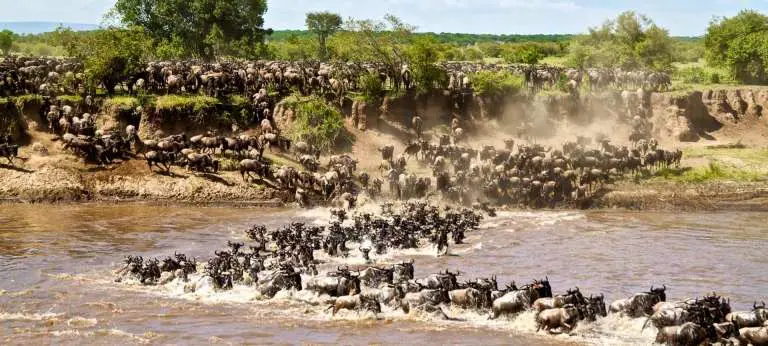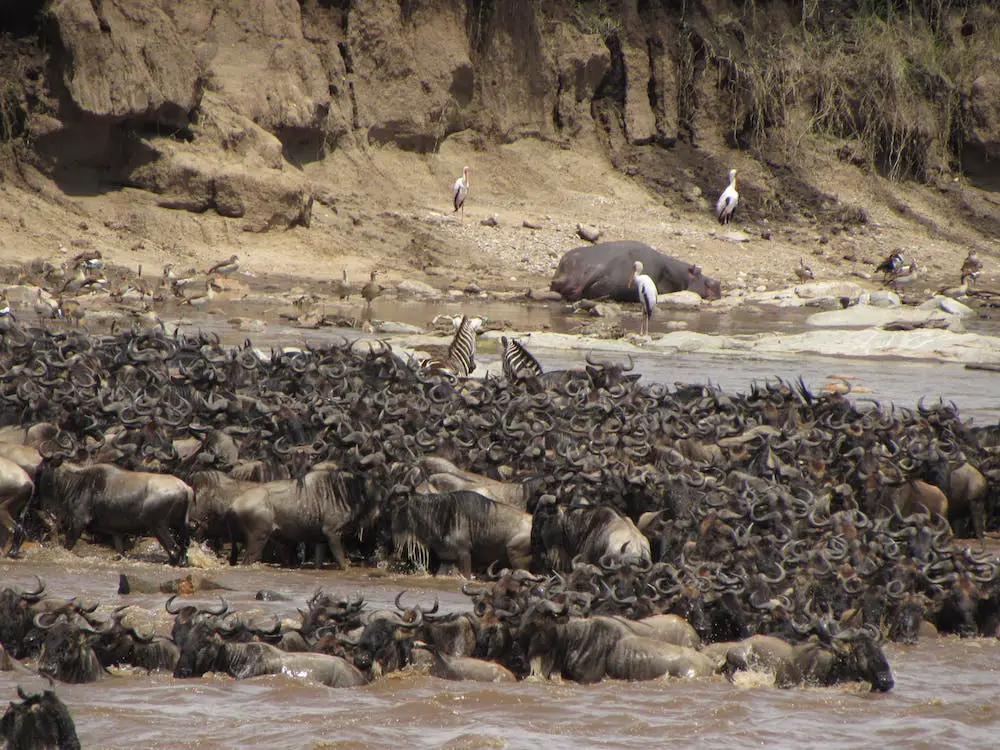Unfolding across the Serengeti and Masai Mara ecosystems, the Great Wildebeest Migration is undoubtedly one of the most phenomenal natural spectacles on Earth. The sights, sounds, and sheer scale of this migration captivate the hearts and minds of many. Here, we dive into the top 10 amazing things about this extraordinary event.
Largest Overland Migration
Possibly the most striking aspect of the Wildebeest Migration is its sheer scale. Over 1.5 million wildebeest, accompanied by hundreds of thousands of zebras and gazelles, traverse about 1,800 miles across Tanzania and Kenya in search of fresh pastures, creating an awe-inspiring sight of a sea of animals on the move.
About 5,000 Tonnes of Grass is Consumed
This is the largest migrating group of grazers on earth that move together towards the same direction. During this journey of 1,800 miles, these millions of animals consume approximately 5,000 tonnes of grass daily.
Perilous Journey

The Mara River crossing is one of the most dramatic parts of the migration. The wildebeest must brave crocodile-infested waters and strong currents, providing gripping moments of tension, tragedy, and triumph.
Their Large Numbers is Their Weapon Against Predators
The migration is a lifeline for the savannah’s predators. Lions, cheetahs, hyenas, and leopards all capitalize on the abundance of prey, making it a perfect time for tourists to witness thrilling hunting scenes.
The Influence on the Ecosystem
The migration plays a significant role in shaping the Serengeti-Mara ecosystem. The grazing of the vast herds influences vegetation patterns, while their nutrient-rich dung fertilizes the soil. This cyclical movement is essential in maintaining the health and balance of the ecosystem.
The Migration is Triggered by Rain

The timing of the migration is intrinsically linked to the region’s rainfall patterns. Wildebeest follow the rains that usher in fresh pastures, their movements dictated by nature’s rhythms. It’s an incredible testament to the instinctual wisdom of these creatures.
The Spectacle of Calving
During the calving season in February, the Serengeti plains become a nursery. Over a span of a few weeks, hundreds of thousands of wildebeest calves are born each day. This period is a highlight of the migration, symbolizing hope, renewal, and the continuation of the cycle of life.
Boosts Local Economies
The migration has a profound impact on local communities. It attracts tourists from around the world, boosting local economies. The migration thus plays a role in sustaining not only the natural ecosystems but also human livelihoods.
It’s not an Age Old Phenomenon
The migration started in the 1960’s when the wildebeest numbers grew which brought the need to search for pasture and water. The herd which comprises of 1.4 million wildebeests and hundreds of thousands of other grazers such as zebras and antelopes requires about 5,000 tonnes of grass per day.
Witnessing the Great Wildebeest Migration is a humbling experience, a showcase of the raw and ruthless, yet profoundly beautiful cycle of life. Understanding these amazing facets of the migration underscores its global significance and the imperative to conserve and cherish this extraordinary event.


